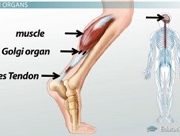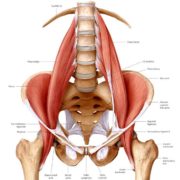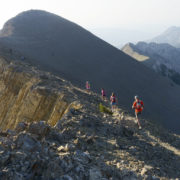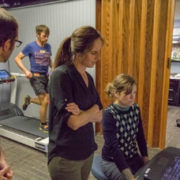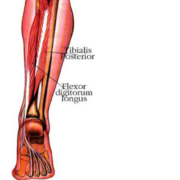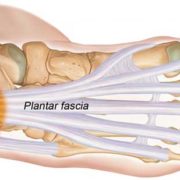(Should runners stretch and if so how?)
John Fiore, PT
Confusion and controversy exists regarding the proper way for runners to stretch. Some runners stretch regularly while some never stretch at all. Stretching confusion originates in choosing the most effective way to stretch. Should I stretch to reduce injury risk? Will stretching help or hurt my running performance? What muscle(s) if any should I stretch? Understanding the difference between static stretching and dynamic stretching as well as when to utilize each is an important first step in developing an individualized stretching routine to meet your running goals.
Athletes generally stretch before or after training and competition because we were once told we should. Historically, stretching routines were fairly universal for athletes regardless of body type or sport. Research has shown, however, that static stretching warm-up routines actually decreases athletic performance while a dynamic stretching warm-up routine improves performance by decreasing injury risk (Perrier ET, Pavol MJ, Hoffman MA. J Strength Cond Res. 2011 Jul:25(7):1925-31 & J. Wilson, PhD; Journal of Strength and Conditioning).
Here are some great dynamic stretches for runners.
Static stretches for runners include calf, hip flexor, quadriceps, and iliotibial band stretches. Typically held for at least 60-seconds, the purpose of static stretching is to increase flexibility. Static stretching targets collagen (the main component of tendons and connective tissue such as fascia) elasticity as well as muscle length. The problem with static stretching as a warm-up routine is two-fold. Increasing the length of a muscle or connective tissue in the body is a long-term commitment. Stretching statically for 60-seconds prior to a run or race will not result in long-term effects. The time to do a static stretching routine is after your run or race is over, or when your body is at rest. Static stretching requires a time commitment, but can be an effective means of reducing injury if done properly. Static stretching has an inhibitory neuromuscular effect on the body. Research has shown that a statically-stretched muscle produces less force for up to an hour following static stretching.
 In contrast, dynamic stretching involves active movement of a limb (and the associated muscles and joints) associated with running prior to training and racing to prepare the body for movement. Dynamic stretching positively influences the neuromuscular component of running-specific muscles. Within the muscle-tendon junction of our lower extremities are structures called Golgi tendon organs. The Golgi tendon organs monitor muscle tension during activity and trigger the body’s protective mechanism of guarding or co-contraction to decrease injury risk. Dynamic stretching as a warm-up prior to activities such as running has been shown to inhibit the reactivity of the Golgi tendon organs. Targeted muscle contraction during dynamic stretching has a positive effect on the Golgi tendon organs. The net result of dynamic warm-up is a body with a short-term, functional increase in muscle length without the strength inhibition characteristic of static stretching.
In contrast, dynamic stretching involves active movement of a limb (and the associated muscles and joints) associated with running prior to training and racing to prepare the body for movement. Dynamic stretching positively influences the neuromuscular component of running-specific muscles. Within the muscle-tendon junction of our lower extremities are structures called Golgi tendon organs. The Golgi tendon organs monitor muscle tension during activity and trigger the body’s protective mechanism of guarding or co-contraction to decrease injury risk. Dynamic stretching as a warm-up prior to activities such as running has been shown to inhibit the reactivity of the Golgi tendon organs. Targeted muscle contraction during dynamic stretching has a positive effect on the Golgi tendon organs. The net result of dynamic warm-up is a body with a short-term, functional increase in muscle length without the strength inhibition characteristic of static stretching.
A dynamic warm-up routine for runners should target the hips, quadriceps, hamstrings, gluteals, gastroc-soleus, intrinsic foot musculature, and upper body-torso. Dynamic warm-up is simple, requires no equipment, can be done wherever you are. To summarize, the goal of a pre-running dynamic warm-up routine include: Moving the joints, warming up the musculature for running, and decrease the body’s resistance (protective guarding) to intense or sustained activity through dynamic stretching.
John Fiore, PT

